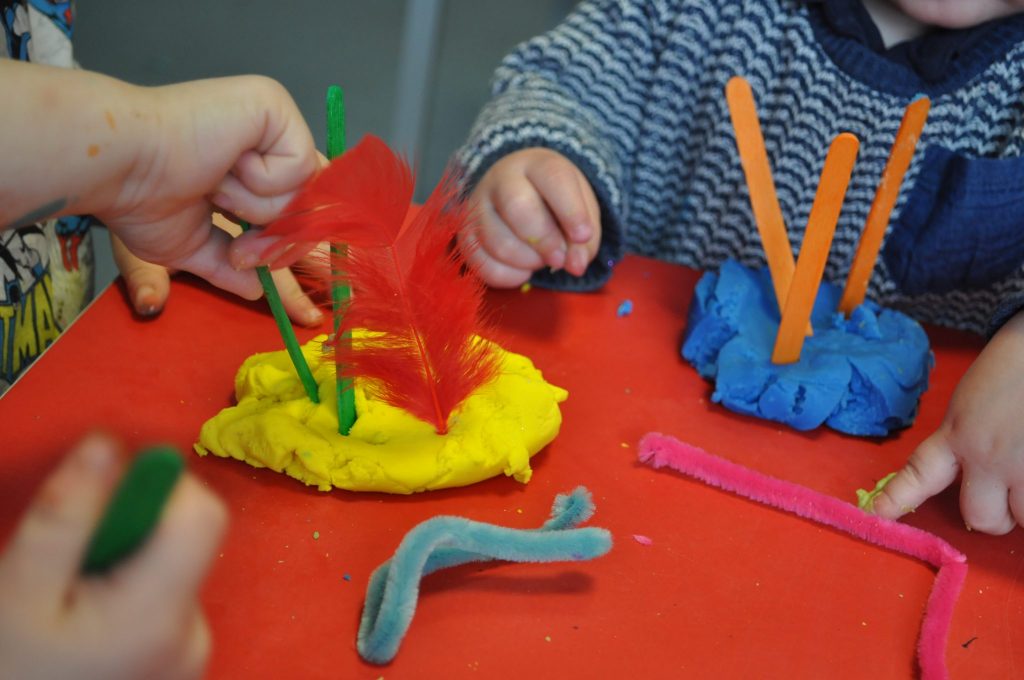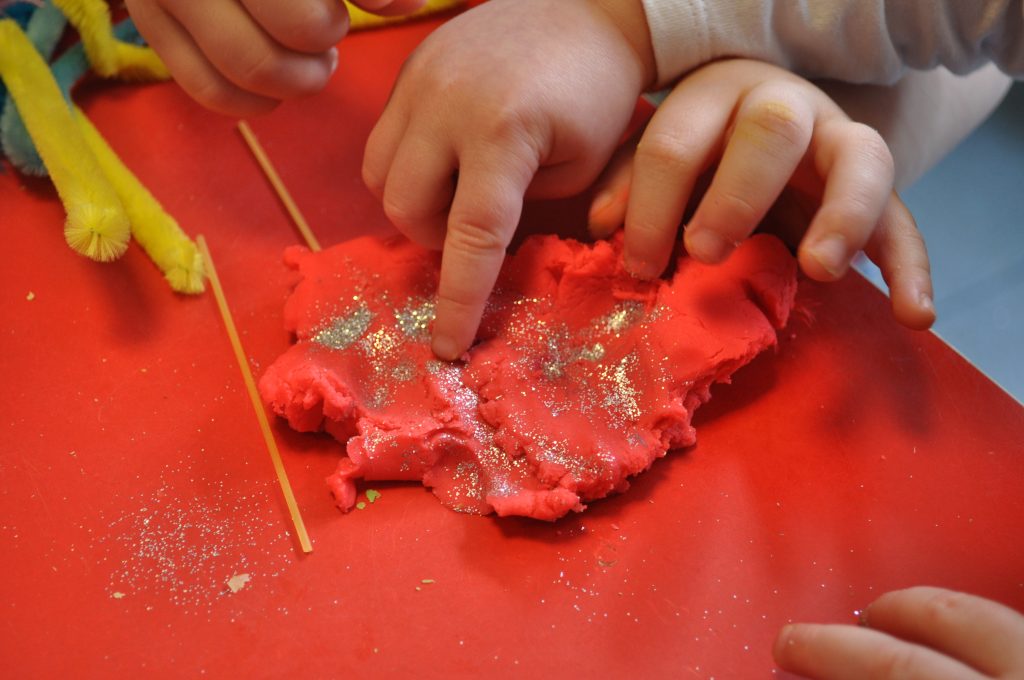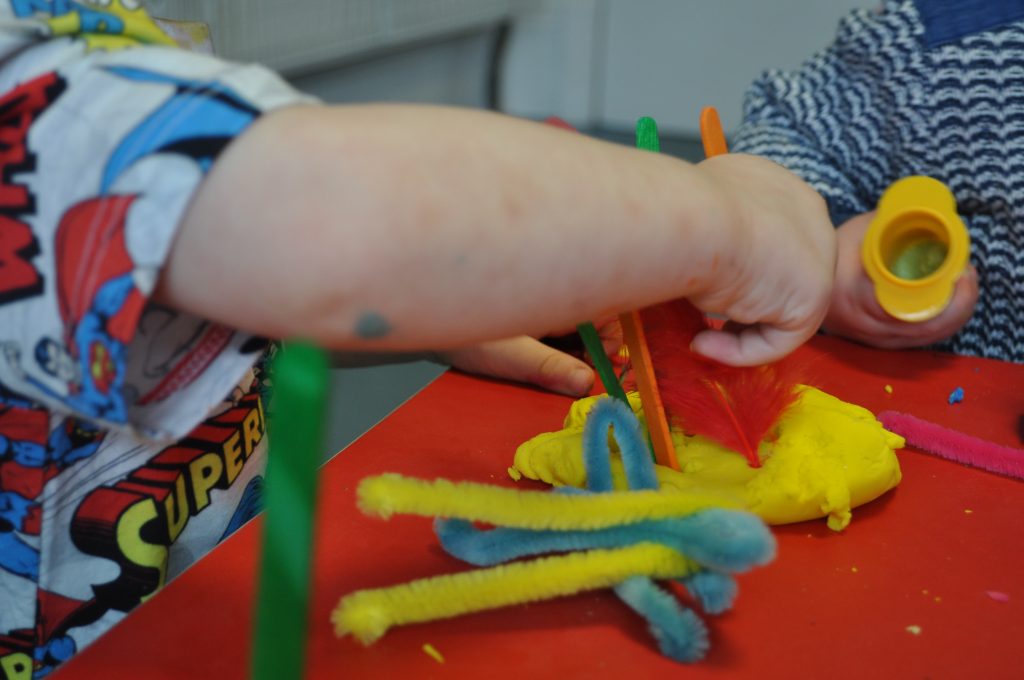Why playing with playdough can benefit children’s development
Many children and adults enjoy playing with playdough; it is a great sensory activity as well as an open-ended resource. There are many benefits to playing with this and plenty of learning happens when exploring it.
Here are just a few of the benefits of playing with playdough:
- Developing Fine Motor Skills – As children manipulate the dough by squashing it, squeezing it, patting and rolling it this helps build the strength in their hand muscles, ready for helping develop further skills such as scissor and pencil control.
- Developing children’s imagination and creativity – Playdough can be made into absolutely anything. Adding open ended resources can help develop children’s imagination as they begin to think about what they can make, for example by introducing cupcake cases children’s play will be lead onto birthdays and blowing the candles out on the cake.
- Language development – Children, will often approach an adult and say ” look at what I’ve made,”This is an ideal opportunity for adults to encourage a conversation with the child, building on their language development.
- Develops self-esteem – Many children are proud of what they have made and will often be eager to show others, this helps develop their self-esteem. As playdough is an open-ended resource, there is no right or wrong way when playing with this resource.
- Developing maths – Playdough is great for introducing maths concepts. Children will make 2d shapes and 3d shapes; they will begin to compare lengths and thickness of their playdough.
- Developing children’s sensory awareness – Playdough is a simple sensory activity that children will spend hours playing with. It can be easily extended by making different types of it such as slimy playdough or scented dough. Visit Pinterest for more playdough ideas.
As playdough can help so many areas of children’s development why not be more adventurous when offering this in your setting, the opportunities are endless as to what you can do with it.
Below is a list of 10 different ways to use playdough;
- Making mini-beasts – Make different colours of dough and provide children with googly eyes, pipe cleaners and let them create different minibeasts.
- Making flowers – Why not purchase some plastic flowers and separate the petals and place these on the table for the children to use, you could also add lollipop sticks as the stem of the flower.
- Glitter playdough – Add some glitter.
- Adding scents – Why not add some different scents such as cinnamon, ginger or strawberry essence.
- Using playdough to support a story, e.g., rainbow fish or Gruffalo. for example using sequins with the dough to support the story rainbow fish.
- Using playdough to support role play – Why not add the dough to your role play area and introduce resources such as cake cases, and cake tins, this is an easy way to support children’s early pretend skills.
- Making playdough monsters – Offer a range of resources on the table such as pipe cleaners, googly eyes, lollipop sticks, feathers and let the children use their imagination to make monsters or creatures.
- Printing on playdough- Find resources to use to print with, pasta, Duplo bricks and beads on a string are ideal for mark making in dough.
- Building with playdough using sticks – This is an ideal activity for older children. Add a ball of dough onto each end of a stick, keep repeating this to create a structure. This is a great problem-solving activity for older children.
- Using playdough to teach children about mathematical concepts, e.g., longer and shorter, – Making snakes/worms is an easy activity to introduce maths concepts such as longer, shorter, thick, thin, etc. You could make some laminated mats that the children could use during this activity.
As you can see, there are so many different ways of using playdough, and once you start introducing some of these, you will begin to think of others.



Leave a Reply